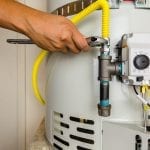Important Maintenance Tips for Your Home's Hot Water SystemKey Guidance on Caring for Your Home's Hot Water System
Instant QuoteThis great article on the next paragraphs on the subject of What Kind of Maintenance Do Water Heaters Need? is unquestionably enlightening. Don't bypass it.

Hot water is important for daily convenience, whether it's for a revitalizing shower or cleaning meals. To ensure your hot water system runs successfully and lasts much longer, routine upkeep is essential. This short article provides practical pointers and understandings on exactly how to keep your home's warm water system to stay clear of disturbances and costly repairs.
Introduction
Maintaining your home's warm water system may seem daunting, yet with a few simple steps, you can guarantee it runs smoothly for many years to find. This overview covers everything from comprehending your hot water system to do it yourself maintenance ideas and knowing when to employ professional aid.
Importance of Preserving Your Warm Water System
Normal maintenance not only expands the life-span of your hot water system but likewise guarantees it runs efficiently. Overlooking upkeep can bring about lowered efficiency, higher energy expenses, and also early failing of the system.
Signs Your Hot Water System Demands Maintenance
Recognizing when your hot water system needs focus can prevent major concerns. Look out for indications such as irregular water temperature level, unusual sounds from the heating system, or rusty water.
Comprehending Your Warm Water System
Prior to diving into maintenance jobs, it's handy to understand the fundamental elements of your warm water system. Generally, this includes the hot water heater itself, pipelines, anode rods, and temperature controls.
Regular Monthly Upkeep Tasks
Normal month-to-month checks can help catch minor problems prior to they intensify.
Purging the Water Heater
Flushing your water heater eliminates debris build-up, improving efficiency and extending its life.
Checking and Changing Anode Rods
Anode poles protect against deterioration inside the container. Evaluating and replacing them when worn out is essential.
Examining and Adjusting Temperature Settings
Changing the temperature settings makes sure ideal efficiency and safety and security.
Do It Yourself Tips for Upkeep
You can execute numerous upkeep jobs on your own to maintain your warm water system in leading problem.
Looking for Leakages
Consistently check pipelines and connections for leaks, as these can lead to water damage and higher expenses.
Checking Pressure Alleviation Valves
Checking the stress safety valve guarantees it functions properly and stops too much stress build-up.
Shielding Pipes
Insulating hot water pipes decreases heat loss and can save energy.
When to Call an Expert
While DIY upkeep is useful, some problems need professional expertise.
Facility Concerns Needing Expert Help
Instances consist of major leaks, electric problems, or if your water heater is continually underperforming.
Regular Expert Maintenance Conveniences
Specialist maintenance can consist of complete evaluations, tune-ups, and ensuring conformity with security requirements.
Conclusion
Normal maintenance of your home's hot water system is necessary for performance, durability, and expense financial savings. By complying with these pointers and understanding when to look for expert aid, you can guarantee a trustworthy supply of hot water without unanticipated interruptions.
How to Maintain an Instant Hot Water Heater
Before tinkering with your hot water heater, make sure that it’s not powered on. You also have to turn off the main circuit breaker and shut off the main gas line to prevent accidents. Also turn off the water valves connected to your unit to prevent water from flowing into and out of the appliance. 2. When you’re done, you have to detach the purge valves’ caps. These look like the letter “T” and are situated on either side of the water valves. Doing so will release any pressure that has accumulated inside the valves while at the same time avoid hot water from shooting out and burning your skin. 3. When the purge valves’ caps are removed, you have to connect your hosing lines to the valves. Your unit should have come with three hoses but if it didn’t, you can purchase these things from any hardware or home repair shops. You can also get them from retail stores that sell water heating systems. Read the user’s manual and follow it to complete this task properly. When the hosing lines are connected, open the purge port’s valves. 4. You should never use harsh chemical cleaners or solutions when cleaning your unit. Make use of white vinegar instead. It should be undiluted and you’ll probably use about 2 gallons. 5. Now flush your water heater. This task should probably take about 40 minutes. We can’t give you specific directions for this because the procedure is carried out depending on the type, model and brand of your heater. With that being said, refer to the user’s manual. 6. When you’re done draining the unit, you have to turn off the purge port valves again. Remove the hosing lines that you earlier installed on each of the water valves. Put the valve caps (purge port) back in their respective places and be very careful so as not to damage the rubber discs that are found inside these caps. 7. Now that everything’s back in place, check your user’s manual again to find out how to reactivate your water heating system. 8. Once it is working, turn one of your hot water faucets on just to let air pass through the heater’s water supply pipes. Leave the tap on until water flows smoothly out of it. https://www.orrplumbing.com/blog/2014/september/how-to-maintain-an-instant-hot-water-heater/

As a reader on Tips For Maintaining Your Hot Water Heater, I thought sharing that section was important. Sharing is good. Helping others is fun. Thanks for going through it.
Go Company